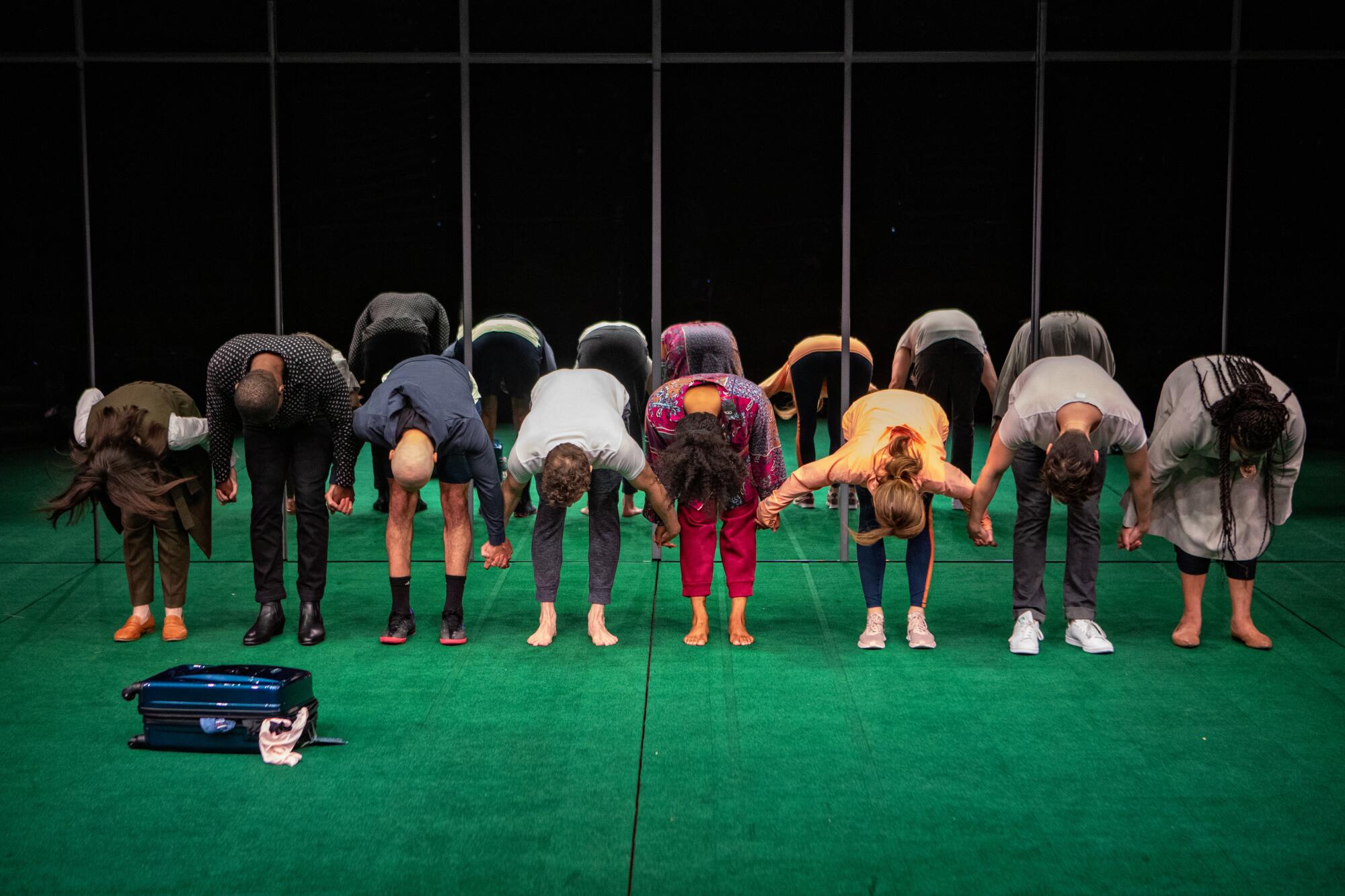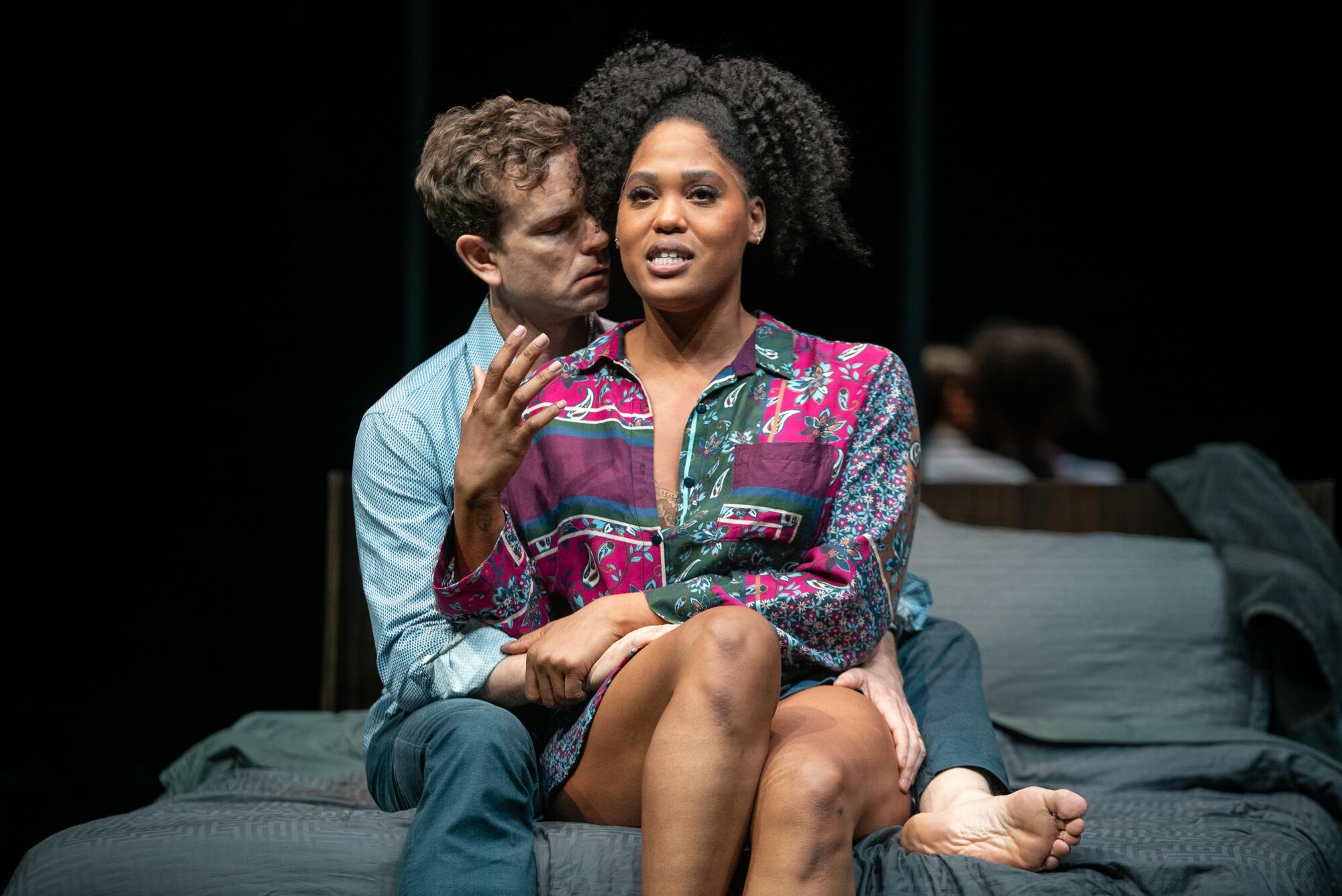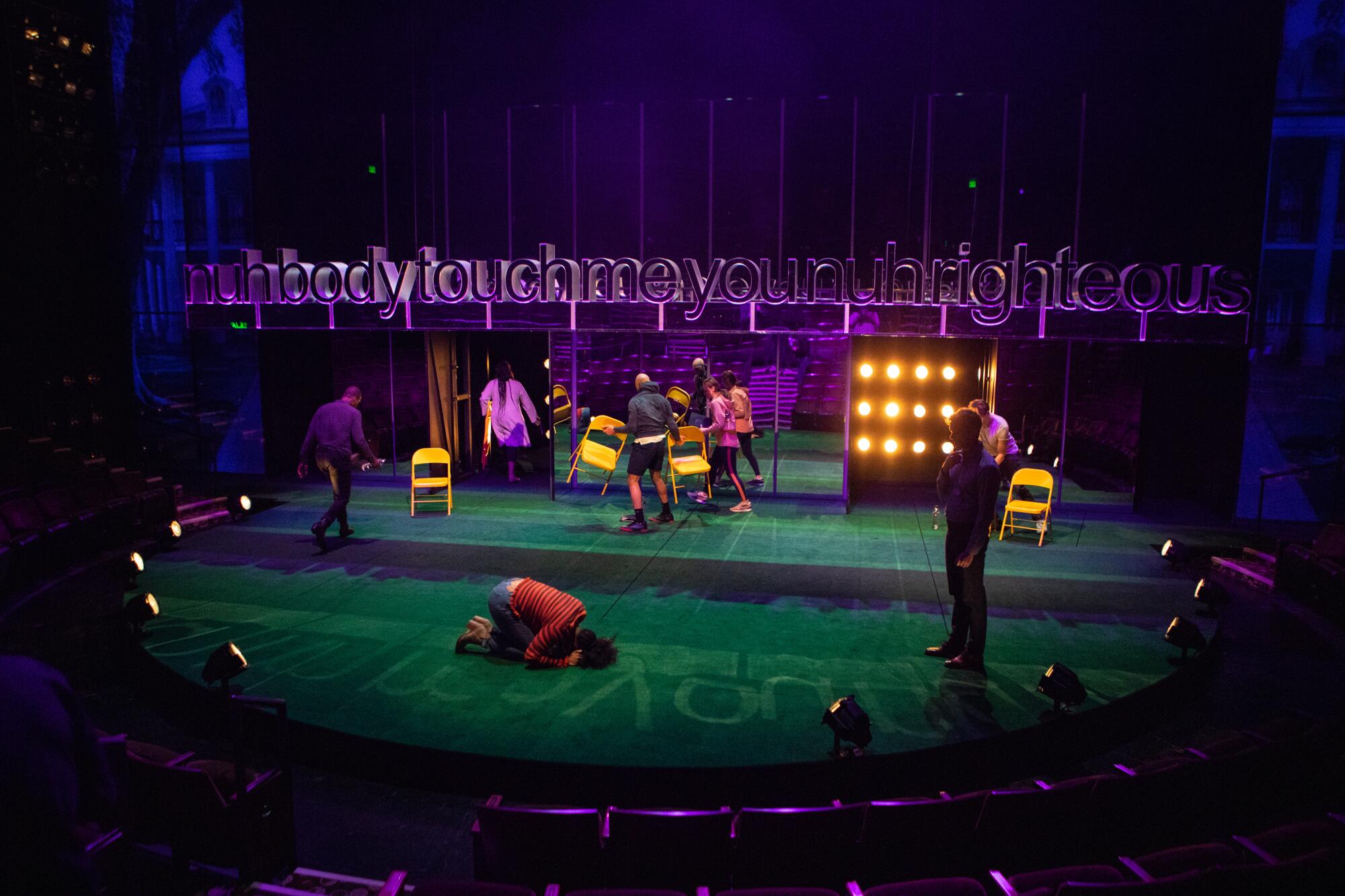
- Share via
This is not a review. Let’s get that out of the way. Also, I’m a Black female playwright. In case anyone is looking for bias either way. My most important caveat is that I’m a theatergoer. I attend a lot of play productions and readings. I once saw 10 plays in Poland — almost all in Polish — over the course of six days. I’m pretty game to travel far and wide to see art on stage, even if that means sitting through a five-hour production performed by pale, naked actors speaking another language and wearing the heads of farm animals. (There’s been a lot of nudity and anthropomorphism in Polish theater I’ve seen.)
I was not bothered by the lack of BIPOC actors on stages there because the demographics in Kraków don’t support the notion that there would be many, if any, Black performers. Nor did it seem unusual to be one of only a handful of BIPOC audience members, nearly all of whom had traveled from the U.S. for that particular theater festival. What does bother me is sitting in a theater in Los Angeles or New York and being surrounded by a nearly all-white audience. How am I in the minority in New York? It’s New York! Well, it’s also white American theater. And it’s got a problem.

Antoinette Crowe-Legacy and Paul Alexander Nolan in “Slave Play.”
When my husband and I saw “Slave Play” on Broadway in 2019, there were three people of color in the entire sold-out audience. I counted. Before the play began, a white woman sitting in front of us asked me to change seats with her. Even after explaining to her that my husband and I were together, her response was, “Oh, I know. I just really want an aisle seat.”
The privilege with which this woman must move through the world annoyed but did not surprise me. What did surprise me was the loud, bold and inappropriate laughter from that white audience. They laughed at the parts that weren’t funny: The moments of oft-experienced microaggressions. The parts of the play that a Black person might recognize as problematic, even painful. The parts that would make me sigh or groan. That white audience found those moments hilarious.
I completely understood playwright Jeremy O. Harris’ decision to offer what he termed Black Out performances — similar to what productions do for school groups with free stagings for invited community members — during the play’s initial run in New York City. He reprised the practice for the play’s new West Coast run at the Mark Taper Forum, which held a Black Out performance last Friday. It’s a challenging play to watch and one that has caused divisive arguments, demands for answers, and criticism. To experience the work sitting in a sea of whiteness is even more of a challenge; to remove the white gaze eliminates at least one hurdle in examining and experiencing the work.
Aja Houston, who went to see “Slave Play” during its invite-only Black Out night at the Taper last weekend in Los Angeles, says she felt powerful to be in this traditionally white theater space “surrounded by the healing, deafening sounds of Black joy without racial constraint. This power came from feeling safe, encouraged to be openly engaged, and fully seen, seen without feeling questioned about why my Blackness was allowed in.”
This open engagement is something that Harris welcomed in his opening remarks that night, encouraging audiences to laugh, talk back and to be full participants in the experience of his play. No one was going to silence us. We weren’t an intrusion. We were the event.
Harris may not have been the first to incorporate such welcoming viewings, but it is a first for many of us to attend them, including Harris. “I’d never in my life had the experience of sitting in the theater with only Black people,” he says.

The cast in action.
There have been detractors who feel that, despite hosting Black audience nights, this play was never meant for them. Granted, some of these opponents to Harris’ play have not seen or even read it, admitting freely that the title alone tells them everything they need to know. Several more who have seen the play have only experienced it engulfed in that sea of white and inappropriate laughter.
Does context and geography of the space alter one’s perception of the work? Harris believes it does. “All work changes depending on the building it’s in,” he says. “Audience itself changes the DNA of a play. That’s why this play is important to be seen in a litany of different ways.”
Personally, I was more engaged and felt more able to examine the Black characters’ arcs during the Black Out performance. A moment of self-realization for the character Phillip (Jonathan Higginbotham) during the second act was no longer a laugh-out-loud bit about a trivial lover, as it was received by that nearly all-white Broadway audience. With the Black audience, Phillip wasn’t the joke — he was a sympathetic, deeply troubled man having a life-changing catharsis. When a male audience member yelled to him, “Work it out!” the audience got it.
There are many attendees who, despite viewing “Slave Play” during a Black Out night, still maintain that they are not the play’s target audience. Over the past week, Harris has been embroiled in — and some might even say lost — a Twitter clash with two prominent writers who believe this play was not only written for a white audience but also actively causes harm to Black women. One audience member I spoke with after the performance expressed that he absolutely did not see himself on that stage, but even with his disassociation from the characters and their actions, he appreciated the rare opportunity to see the play with an audience that looks like him and to commune with them afterward.
It is rare. And again, it’s a problem.
Harris has a solution for how and when this problem gets addressed. He says it involves changing the dynamics of theatergoing itself and for theaters to think actively about holding Black Out performances of their own — “radically bringing Black people to the theater.” Similar targeted audience nights are happening more and more, including Harvard’s production of “Macbeth in Stride,” Dominique Morisseau’s “Pipeline” at Lincoln Center, and both Katori Hall’s “The Hot Wing King” and Lauren Yee’s “Cambodian Rock Band” at Signature Theatre.
The communal understanding that this is our space, our work, our shared awareness is an incomparable feeling I’ve recently experienced as a playwright as well. With the Los Angeles world premiere of my play “A Hit Dog Will Holler,” a co-production by Playwrights’ Arena and Skylight Theatre Company, the actors soared as they performed in a space full of the very people for whom the play was written.
Every joke hit. Every cultural reference resonated. I remember thinking, why don’t we do this more often? Seriously. Why don’t we?
More to Read
The biggest entertainment stories
Get our big stories about Hollywood, film, television, music, arts, culture and more right in your inbox as soon as they publish.
You may occasionally receive promotional content from the Los Angeles Times.










